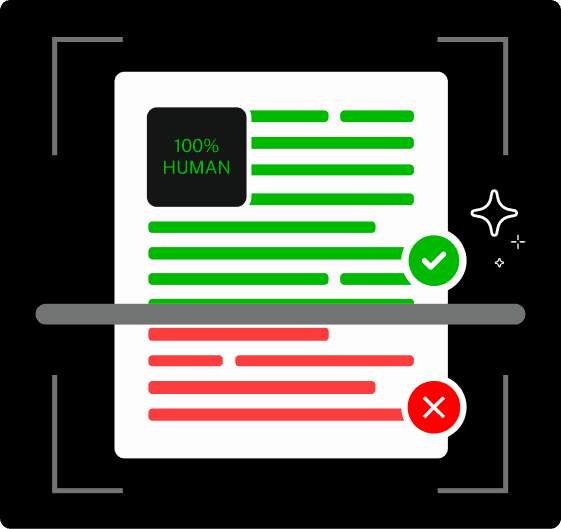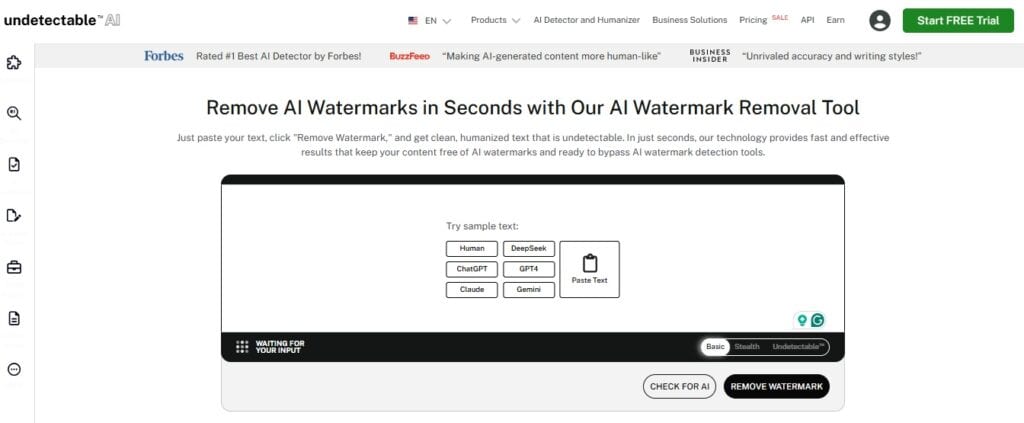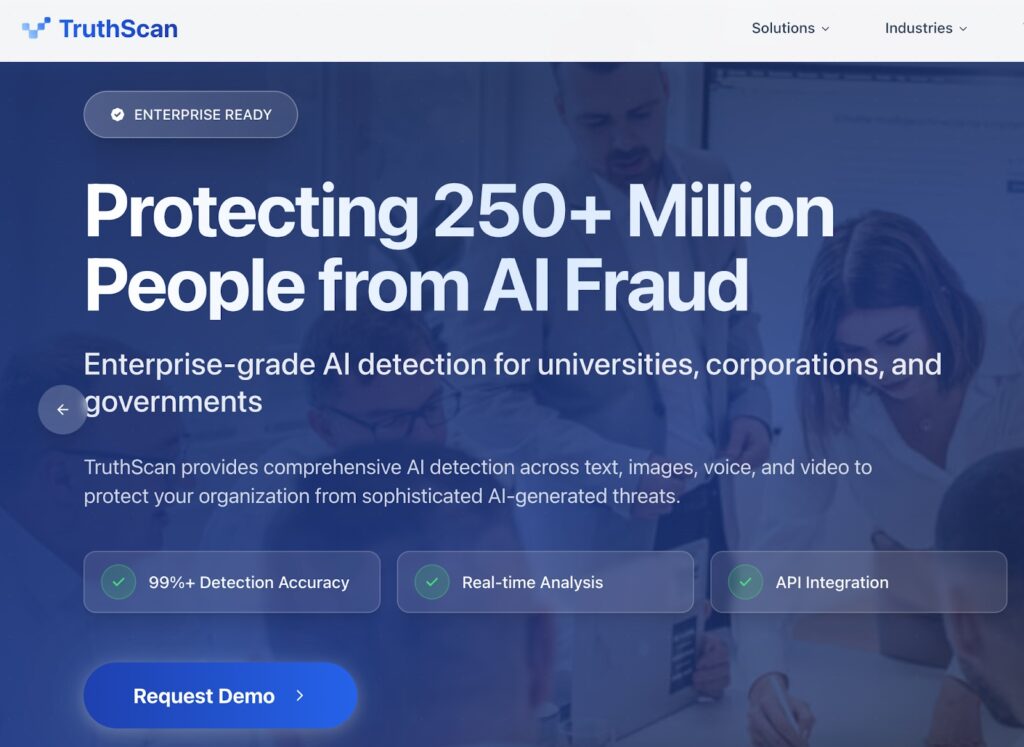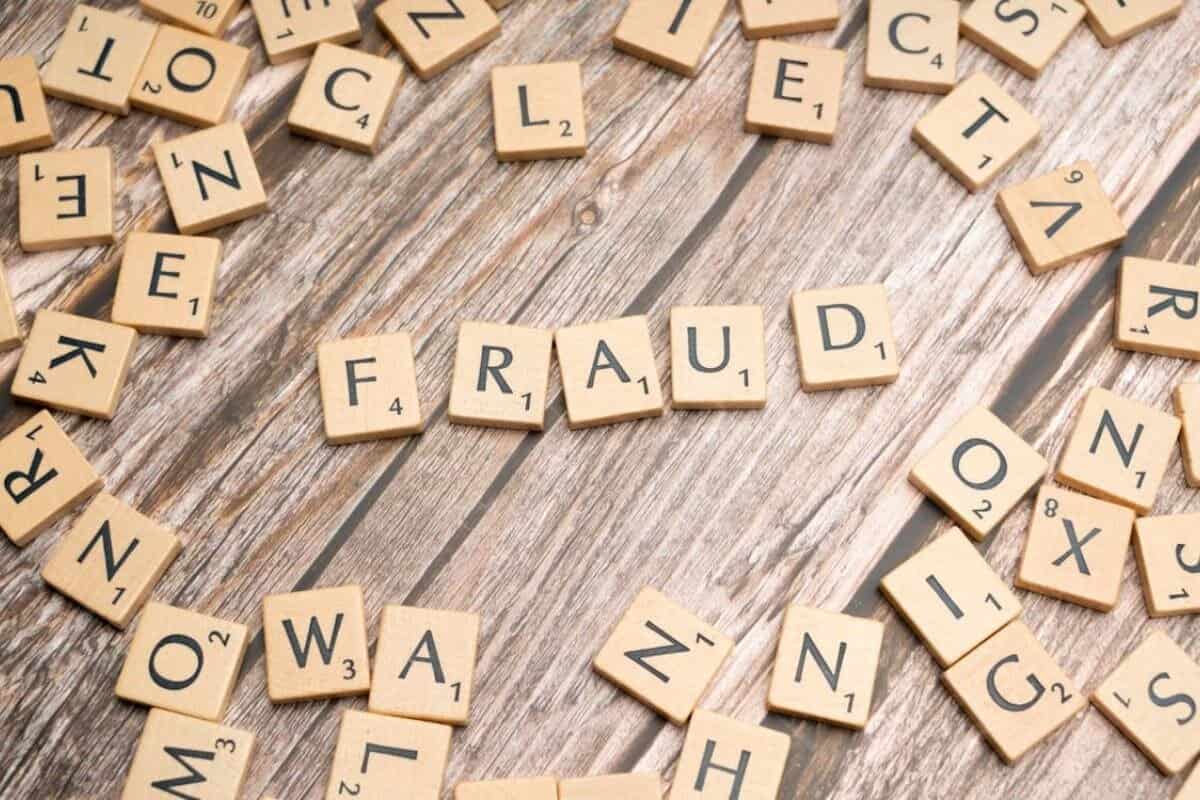Technology is evolving at lightning speed. These advancements make our lives easier and allow businesses to be more productive.
However, there will always be those who use the same advanced tools for criminal activity.
A great example is document fraud. A quick look online will reveal that forging documents has been around as long as documentation itself.
Historically, fraudsters put a lot of time into their scams and will even take pride in their work, especially when it’s indistinguishable from the real thing.
However, you’d be surprised at just how effortless it is to fake a certificate these days.
A quick Google search, a few clicks, and suddenly someone has a degree they never earned or a birth certificate for an identity that doesn’t exist.
Nowadays, forgers are savvier. They are using accessible online tools that mirror the capabilities of the tools that professional and legal certificate issuers use.
They study real documents, replicate them, and exploit the fact that most people can’t tell the difference between a fake and a real certificate at a glance.
If you can’t spot a fake certificate, you may end up hiring an applicant who isn’t actually qualified.
You could also admit students who haven’t passed the courses they claim, or even get into legal trouble.
This guide walks you through everything you need to identify fraudulent documents.
We’ll cover manual checks, digital forensics, and AI-powered tools that can catch what the human eye misses.
By the end, you’ll know exactly how to spot fake certificates and protect your organization from document fraud.
Key Takeaways
- Fake certificates are easier to create than ever, making verification crucial for businesses and institutions.
- Manual verification includes checking paper quality and security features, and comparing documents against legitimate examples.
- Digital metadata can reveal manipulation through editing timestamps, software traces, and compression artifacts.
- AI detection tools like TruthScan analyze documents in seconds, identifying subtle forgery patterns humans often miss.
- Different certificate types (birth, marriage, adoption) have specific security features that forgers commonly fail to replicate accurately.
What Is a Fake Certificate?
A fake certificate is any document that’s been created, altered, or forged to misrepresent information.
It can be completely fabricated or be a genuine certificate that’s been modified to change names, dates, or other details.
People forge documents for different reasons. Job seekers use fake diplomas, immigration scammers make false birth certificates, and others forge marriage certificates.


Never Worry About AI Detecting Your Texts Again. Undetectable AI Can Help You:
- Make your AI assisted writing appear human-like.
- Bypass all major AI detection tools with just one click.
- Use AI safely and confidently in school and work.
The motives differ, but the aim is always to deceive, and institutions and organizations are the ones who end up paying the price.
Forgery has become alarmingly easy. Two decades ago, producing a convincing fake required advanced equipment and printing knowledge.
Today, anyone can generate realistic certificates online for as little as $50.
Editing software like Photoshop makes alterations simple, and even security features like holograms or watermarks can be imitated with basic tools.
However, regardless of how much effort has been made to create the fake, there are always signs of its illegitimacy.
The key is knowing what to look for.
Reliable Methods to Spot Fake Certificates
Spotting a fake certificate takes more than one tactic. The most reliable verification process combines manual inspection, metadata analysis, and official confirmation.
Manual Verification
Start with the basics. Real certificates are usually printed on specific paper stock, security paper with fibers, embossed seals, or watermarks.
Hold the document up to the light and check for these features. Poor printing quality, uneven ink, or missing holograms are major red flags.
Compare the suspect document with a verified sample from the same issuer. Layout, font, and spacing should match exactly.
Any deviation from this is a big sign of forgery.
When in doubt, contact the issuing authority’s verification department directly.
Most can confirm authenticity in minutes using the certificate number.
Digital and Metadata Checks
For scanned or electronic certificates, metadata analysis is critical. Check the file properties. The creation and modification dates should align with the issue date.
If a document claims to be from 2015 but was created last week, it’s either fake or a copy.
Examine traces of editing software. If the file shows signs of Photoshop or GIMP, it likely isn’t official.
Look for inconsistencies like clone stamp patterns, mismatched compression, or altered fonts. Each is a subtle clue that something’s been changed.
Together, these checks build a multi-layered defense against document fraud.
Whether it’s a university diploma, license, or marriage record, thorough verification ensures trust because even the most convincing fake certificate can’t outsmart careful inspection.
Use the AI Checker to detect AI-generated certificate descriptions or suspiciously uniform claims.
Paste or upload the text, and it instantly scans for AI patterns that often appear in forged or auto-generated documents.
This quick check adds an extra layer of verification before you move on to advanced forensic tools.
Using AI Detection Tools
Manual checks can only go so far. Human inspectors can miss subtle edits or inconsistencies, especially when forgers use high-quality plotters or advanced editing software.
This is where AI-based document analysis steps in.
Modern verification platforms like TruthScan use artificial intelligence to examine thousands of micro-details in a certificate, details that the human eye would overlook.
Instead of relying on a single indicator, their system evaluates the document’s layout, pixel consistency, font signatures, and embedded security elements, comparing them against databases of verified templates from real issuing authorities.
TruthScan’s process starts with a visual scan. The AI looks for patterns that match or don’t match authentic certificates, from font alignment to watermark depth.
Next comes digital forensics, where the tool reviews metadata, compression traces, and hidden edit layers to detect tampering.
Even a small edit made in image-editing software can leave a digital fingerprint, which the AI can flag instantly.

Finally, TruthScan performs data cross-verification, matching serial numbers or document IDs against official records where available.
Any mismatch or irregularity triggers an alert, and the platform generates a detailed report outlining potential issues instead of a simple “pass or fail.”
For businesses and institutions that handle large volumes of credentials, this kind of AI assistance dramatically improves accuracy, saves time, and helps prevent sophisticated certificate fraud before it has a chance to become official.
When reviewing digital certificates that might include AI-written or AI-assisted text, tools like Undetectable AI’s AI Text Watermark Remover can help clear hidden watermark signals added by AI systems.

It restores text to its natural readability, making it easier for verification tools to analyze the document’s authenticity without interference from AI-generated imprints.
Also, try using TruthScan’s AI Image Detector to analyze certificates or document scans for subtle visual manipulation.
It reviews texture, pixel consistency, and embedded image data to flag forged seals, signatures, or digital edits that may not appear during manual inspection.

This added layer of image-level verification helps organizations confirm document authenticity before proceeding with sensitive approvals or onboarding.
How to Spot Fake Birth Certificates
Birth certificates are some of the most frequently forged government documents.
They’re used in identity theft, immigration scams, and false citizenship claims.
Common Signs of Forgery
- Registration Number: Check for consistent numbering formats. Inconsistencies or unusual spacing suggest forgery.
- Dates: Registration should occur shortly after birth. Late registrations should be clearly indicated.
- Signatures: Real registrar signatures are hand-signed, not photocopied or printed. Identical signatures across multiple certificates indicate a stamp.
- Paper Quality: Authentic certificates are usually printed on specific paper with embedded fibers, watermarks, or heat-sensitive ink. Look for glowing fibers under UV light. Ordinary printer paper is a giveaway.
- Security Features: Holograms, seals, or microprinting should react to light or tilting. Missing or poorly replicated features are red flags.
- Verification: When in doubt, contact the issuing office’s verification department to confirm authenticity directly.
Using TruthScan
TruthScan uses AI and metadata analysis to detect forged birth certificates.
Once you upload a document, the system checks every visual element (fonts, seal alignment, layout, and color patterns) against verified samples from that region.
Then it inspects the digital file for signs of manipulation or inconsistent compression.
Results arrive in seconds with a detailed report showing anomalies, registration mismatches, or editing traces that humans might miss.
How to Spot Fake Marriage Certificates
Scammers forge marriage certificates to obtain immigration status, claim insurance, or commit identity fraud.
These documents are easier to fake than birth certificates because formats differ by county or country.
Signs of a Forged Marriage Certificate
- Verify the issuing authority: The county or municipal office listed must exist and be authorized to issue marriage certificates.
- Check the officiant’s credentials: whether they are a minister, judge, or registrar, their name and title should be verifiable.
- Look closely at the witness signatures: They must be handwritten; uniform printed copies suggest forgery.
- Be wary of date inconsistencies: If the document appears newly printed yet claims a marriage from years ago, confirm with the relevant office.
Missing or inconsistent security features like seals or embossed text are also warning signs.
Using TruthScan

TruthScan’s AI analyzes marriage certificates by comparing design layouts, fonts, and seal placements to genuine samples from global jurisdictions.
It performs pixel-level inspection to detect cloned elements or altered text.
How to Spot Fake Adoption Certificates
Adoption certificates vary widely but follow legal templates set by courts.
Key Red Flags
Start by confirming the court listed on the document actually exists and has jurisdiction over adoptions. Most authentic certificates include a docket or case number.
Verify this number with official court records.
Check the judge’s signature and embossed seal. Printed or low-quality seals are red flags. Dates should align with standard legal timelines for that region.
Unusual gaps or inconsistencies deserve additional scrutiny.
Using TruthScan
TruthScan handles sensitive adoption records with precision and privacy.
The AI checks the certificate’s format, official seals, and layout consistency against authentic court-issued examples.
It examines digital signatures, detects replicas, and flags any altered fields. Its forensic metadata analysis exposes editing traces, helping you uncover fake certificates of authenticity with confidence.
Why Businesses and Institutions Should Use AI Certificate Detection

- Time-Consuming Manual Verification: Thoroughly checking a single certificate can take 15-30 minutes. AI tools like TruthScan reduce this to under a minute per document.
- Inevitable Human Error: Even trained professionals miss details due to fatigue. AI analyzes every document with consistent thoroughness, catching inconsistencies humans might overlook.
- Increasing Sophistication of Fakes: Forgers use advanced technology, creating high-quality fakes that can fool manual inspection. AI is trained on millions of examples, so it can quickly spot subtle discrepancies indicating forgery.
- Real Legal Liability: Accepting fake certificates can lead to legal consequences for organizations. AI verification provides documentation of due diligence.
- Significant Cost Savings: Document fraud costs organizations billions annually. Investing in AI detection tools is far cheaper than dealing with the financial impacts of fraud.
- Scalability Challenges: As organizations grow, so does the volume of documents to verify. AI scales effortlessly, maintaining consistent per-document cost and verification time, whether processing 10 or 10,000 certificates.
TruthScan specifically offers enterprise solutions designed for high-volume verification.
Organizations can integrate the API into existing systems, allowing for automated checking of documents as they’re submitted.
This creates a seamless verification process that doesn’t slow down operations while dramatically improving accuracy.
Check your content using our AI Detector and Humanizer below!
Forgery? Not on Your Watch
Fake certificates are a serious problem, but they’re not unbeatable. With the right approach, you can catch forgeries before they cause damage.
Start with manual verification. Learn what legitimate certificates look like and check for common forgery signs. Examine paper quality, security features, and printing characteristics.
Move to digital forensics. Analyze metadata and look for editing traces. Check file properties and examine documents for manipulation signs.
These digital clues often reveal fakes that look perfect on the surface.
Finally, leverage AI tools.
The key is using multiple verification methods together. No single approach catches everything.
But when you combine manual inspection, digital analysis, and AI detection, you create a robust verification system that protects your organization from document fraud.
Platforms like TruthScan combine visual analysis, digital forensics, and database cross-referencing to catch even sophisticated forgeries.
They’re fast, accurate, and they improve with every document they analyze.
Don’t wait until fraud happens to implement verification procedures. Build certificate checking into your processes now.
Train your team on what to look for. Invest in AI tools that can handle volume while maintaining accuracy.
The cost of prevention is always lower than the cost of dealing with fraud after it’s occurred.
Document verification isn’t glamorous work, but it’s essential.
Every fake certificate you catch prevents potential harm to your organization, to legitimate certificate holders, and to the integrity of the systems we all rely on.
Take verification seriously, use the right tools, and you’ll stay ahead of the forgers.
